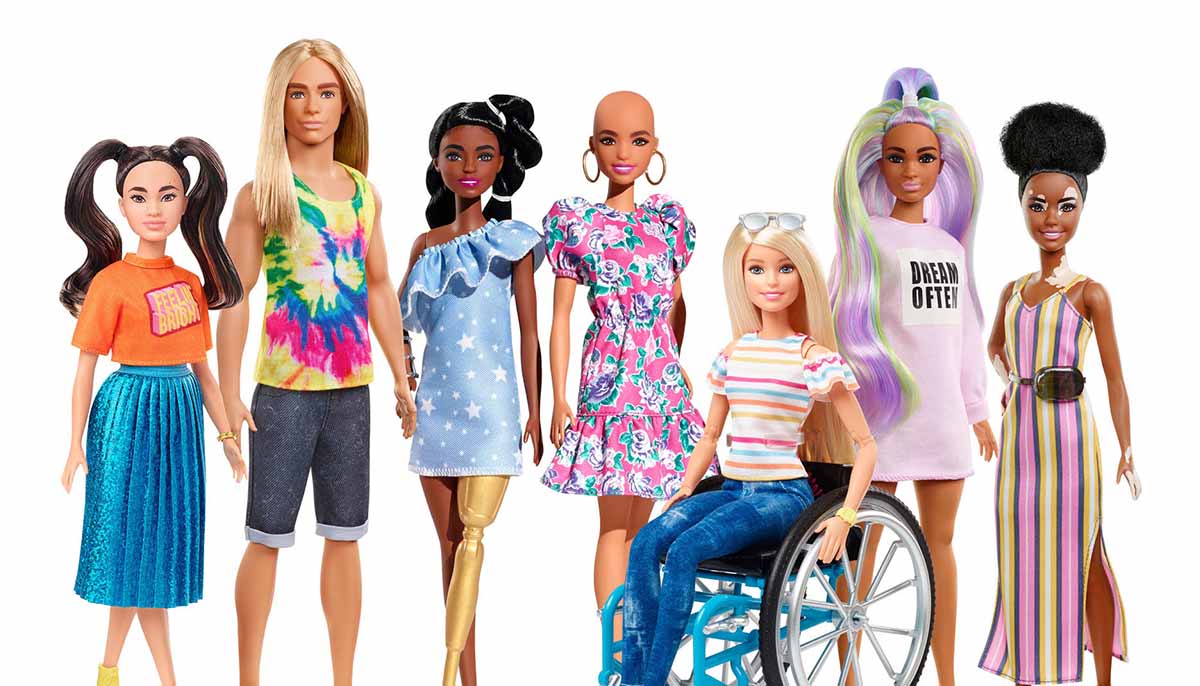Mattel
Mattel’s iconic Barbie toys have been a favorite of young girls (and boys!) since their initial release in 1959.
The most recent line of the popular dolls is celebrating diversity in a big way, launching new dolls who are hairless, have vitiligo and other unique qualities.

The idea behind these is that they can allow children of all appearances to have a doll that matches them, or so that children who might not look like their dolls become more comfortable around different-looking individuals.
The new line of toys is part of the “Barbie Fashionistas” imprint and introduces a number of new dolls to the range. When Mattel showed the new toy with vitiligo on their Instagram page, it became their most “liked” image on the platform in short order. Vitiligo, a condition where some parts of the skin become notably lighter than the surrounding skin, is commonly misunderstood.
Mattel also addressed the hairless doll in the range, stating “If a girl is experiencing hair loss for any reason, she can see herself reflected in the line.” There’s something especially heartwarming about the thought of a young girl finding comfort in one of her dolls sharing her appearance.
Mattel once received flak from many publications and activists who felt the incredibly stylized, slim and homogenous line of dolls might be giving young girls body image issues. Seemingly taking these criticisms to heart, Mattel unveiled the Fashionistas line, which now includes over 170 diverse dolls that are designed to help everyone feel included.
Last year, in the UK, the two best-selling Fashionistas were both dolls in wheelchairs. Mattel also created a number of dolls with prosthetic limbs, many dolls with more realistic body proportions, more diverse hair textures and all-around more welcoming designs for young people to see themselves in.
The line includes a number of “firsts” for Barbie, as well. Included in the range was the 2017 doll wearing a hijab, a move that garnered a large social media buzz while promoting the body-positive line. While there have been scattered complaints about “forced diversity,” the majority of the response to Mattel’s diversity initiative have been positive.